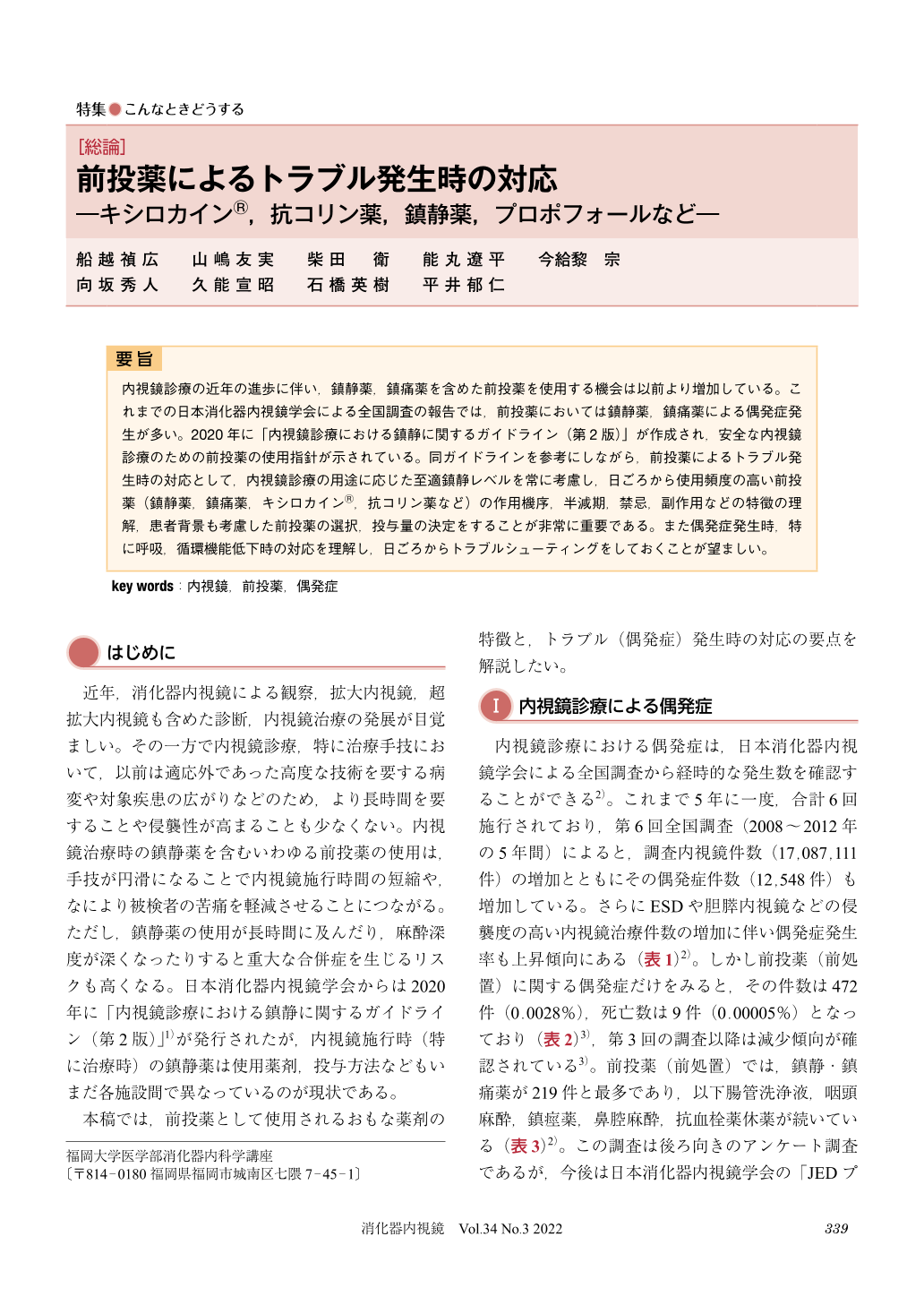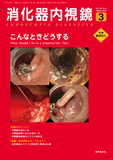Japanese
English
- 有料閲覧
- Abstract 文献概要
- 1ページ目 Look Inside
- 参考文献 Reference
要 旨
内視鏡診療の近年の進歩に伴い,鎮静薬,鎮痛薬を含めた前投薬を使用する機会は以前より増加している。これまでの日本消化器内視鏡学会による全国調査の報告では,前投薬においては鎮静薬,鎮痛薬による偶発症発生が多い。2020年に「内視鏡診療における鎮静に関するガイドライン(第2版)」が作成され,安全な内視鏡診療のための前投薬の使用指針が示されている。同ガイドラインを参考にしながら,前投薬によるトラブル発生時の対応として,内視鏡診療の用途に応じた至適鎮静レベルを常に考慮し,日ごろから使用頻度の高い前投薬(鎮静薬,鎮痛薬,キシロカインⓇ,抗コリン薬など)の作用機序,半減期,禁忌,副作用などの特徴の理解,患者背景も考慮した前投薬の選択,投与量の決定をすることが非常に重要である。また偶発症発生時,特に呼吸,循環機能低下時の対応を理解し,日ごろからトラブルシューティングをしておくことが望ましい。
With the recent advances in endoscopic practice, the chances of using premedication, including sedatives and analgesics, are increasing. According to the reports of the national survey conducted by the Endoscopy Society so far, there are many accidents caused by sedatives and analgesics among the premedications. In 2020, Japan Gastroenterological Endoscopy Society (JGES) have demonstrated the second edition of the “Guidelines for Sedation in Endoscopic Practice” was prepared, which provides guidelines for the use of premedication for safe endoscopic practice. While referring to the guidelines, as a response to troubles caused by premedication, always consider the optimal sedation level according to the purpose of endoscopic treatment, and premedication (sedatives, analgesics, etc.) that are frequently used on a daily basis. It is very important to understand the mechanism of action, half-life, contraindications, side effects, etc. of xylocaine, anticholinergic drugs, etc. to select premedication in consideration of the patient’s background, and to determine the dose. In addition, it is desirable to understand how to deal with accidents, especially when respiratory and circulatory function declines, and to perform trouble shooting on a daily basis.

© tokyo-igakusha.co.jp. All right reserved.


